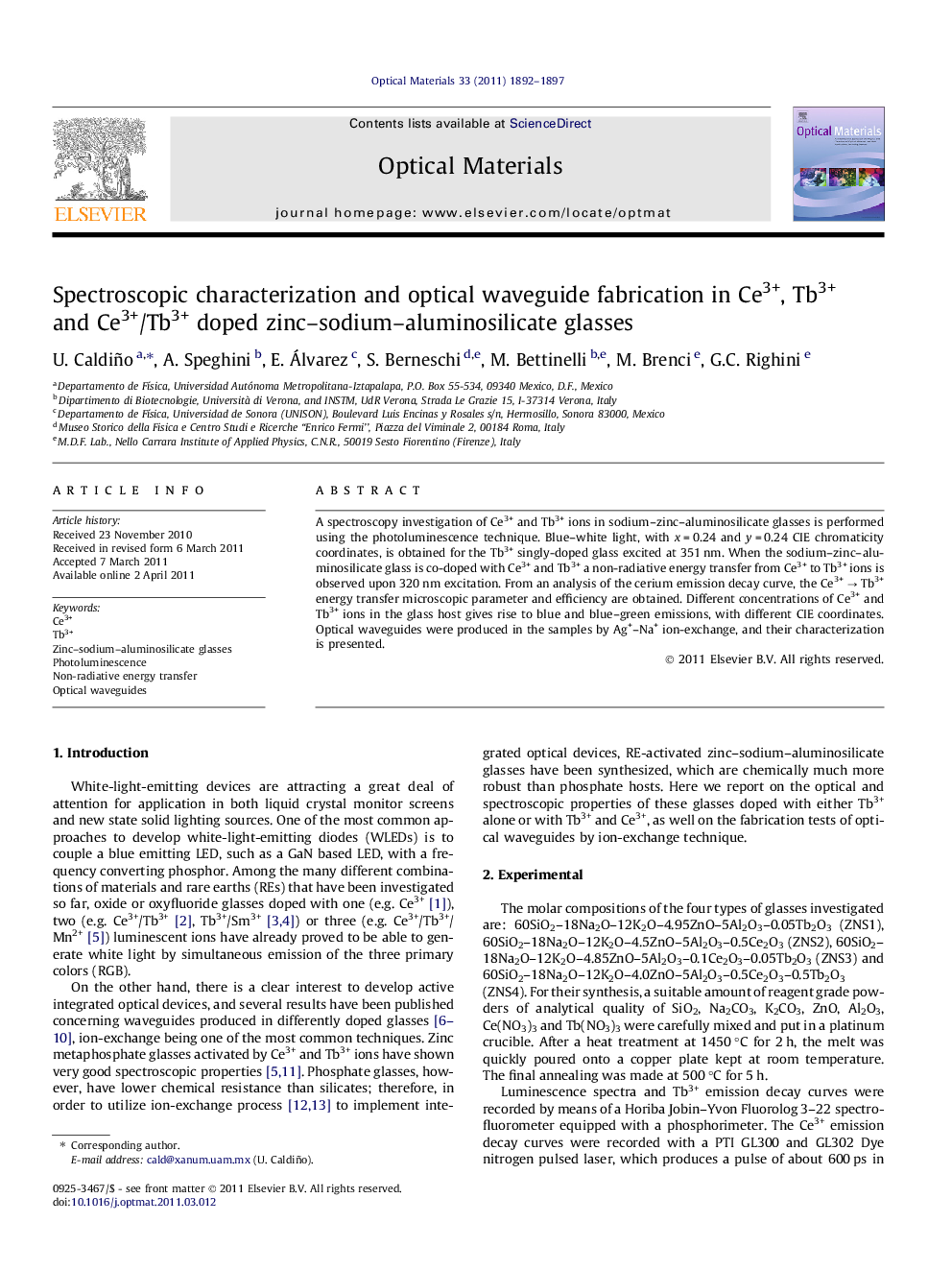| Article ID | Journal | Published Year | Pages | File Type |
|---|---|---|---|---|
| 1494802 | Optical Materials | 2011 | 6 Pages |
A spectroscopy investigation of Ce3+ and Tb3+ ions in sodium–zinc–aluminosilicate glasses is performed using the photoluminescence technique. Blue–white light, with x = 0.24 and y = 0.24 CIE chromaticity coordinates, is obtained for the Tb3+ singly-doped glass excited at 351 nm. When the sodium–zinc–aluminosilicate glass is co-doped with Ce3+ and Tb3+ a non-radiative energy transfer from Ce3+ to Tb3+ ions is observed upon 320 nm excitation. From an analysis of the cerium emission decay curve, the Ce3+ → Tb3+ energy transfer microscopic parameter and efficiency are obtained. Different concentrations of Ce3+ and Tb3+ ions in the glass host gives rise to blue and blue–green emissions, with different CIE coordinates. Optical waveguides were produced in the samples by Ag+–Na+ ion-exchange, and their characterization is presented.
► Ce3+ and Tb3+-activated zinc–sodium–aluminosilicate glasses have been synthesized. ► Different Ce3+ and Tb3+ contents in the glass gives rise to blue–white, blue and blue–green emissions. ► Multimode optical waveguides were successfully produced by Ag+–Na+ ion-exchange. ► The suitability of the ion-exchange to optimize the manufacturing of future devices is confirmed.
